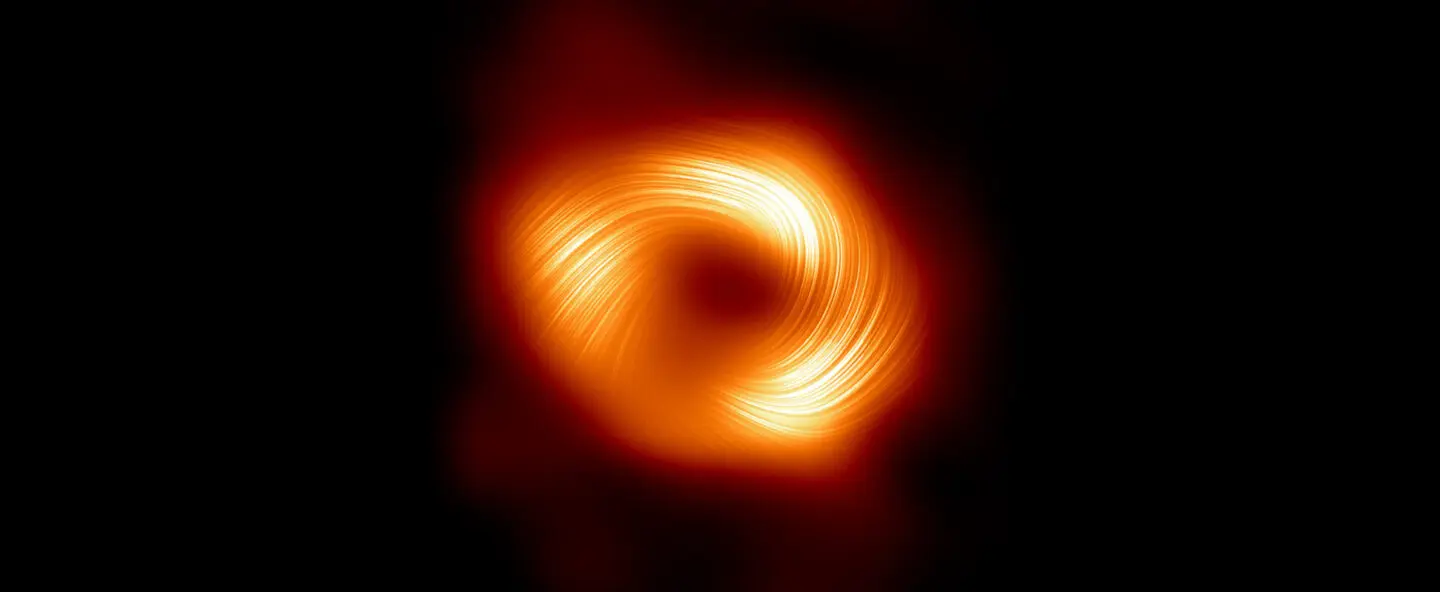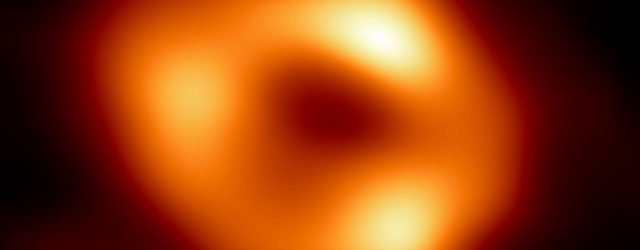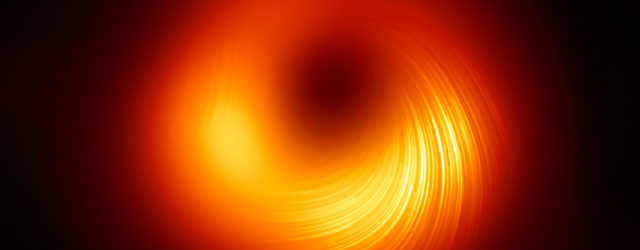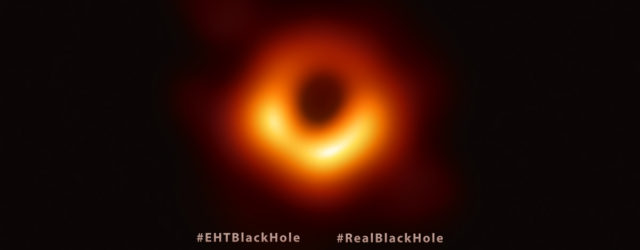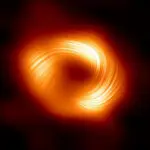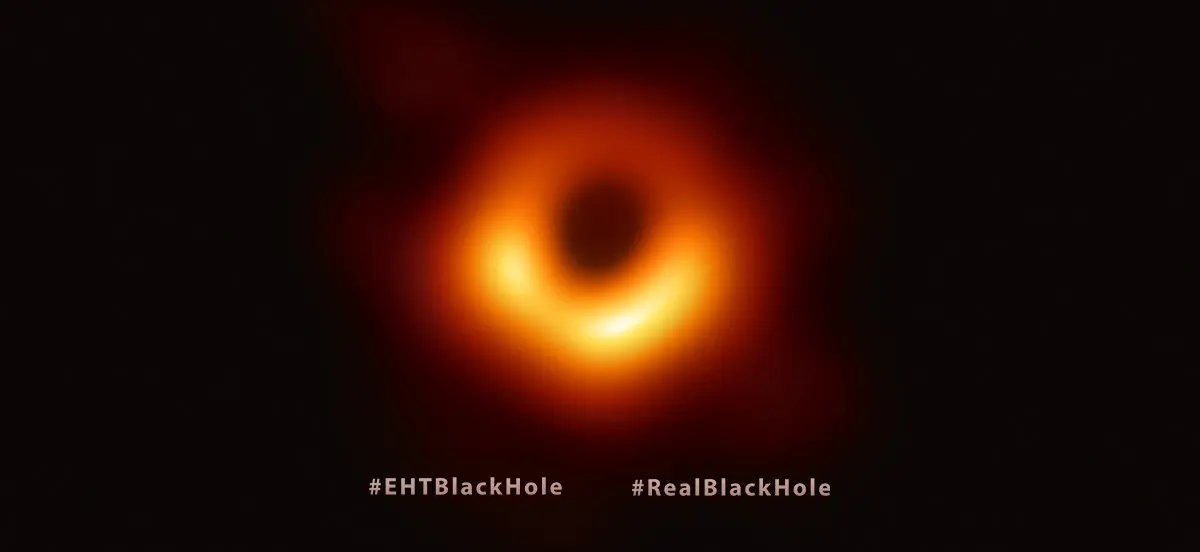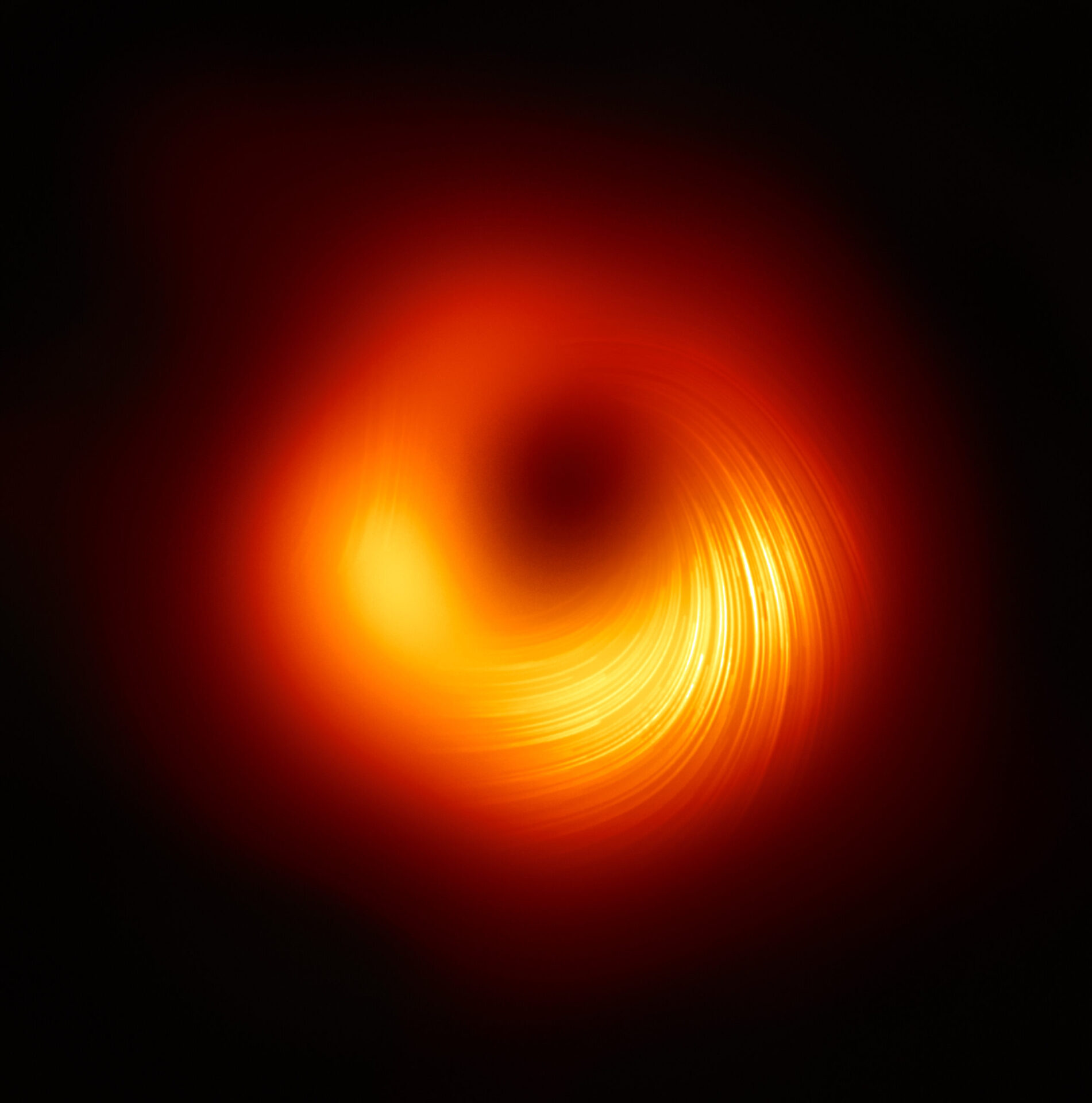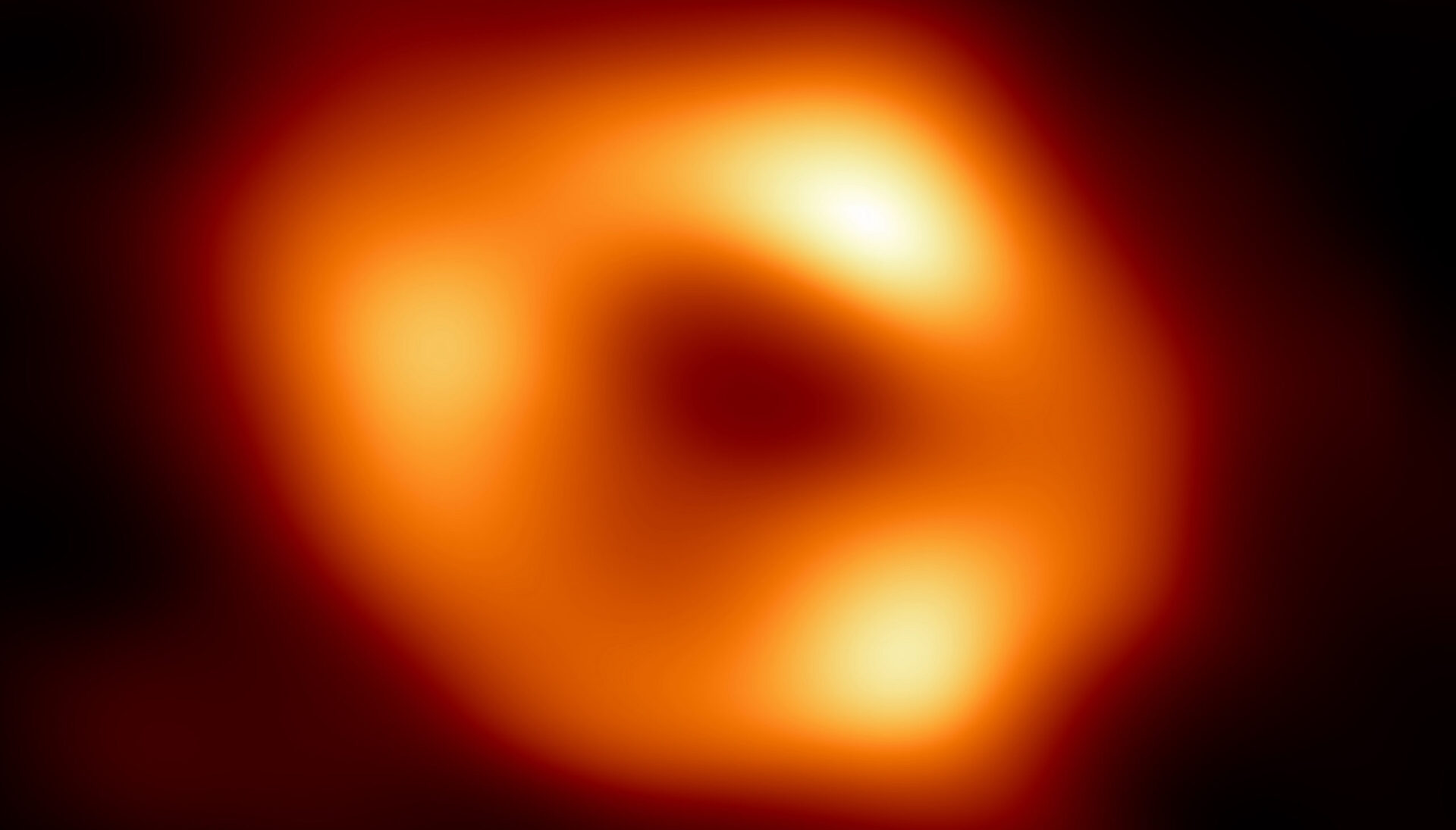Astronomers unveil strong magnetic fields spiraling at the edge of Milky Way’s central black hole
27 March, 2024 / Read time: 9 minutes
Scientific PaperA new image from the Event Horizon Telescope (EHT) collaboration has uncovered strong and organized magnetic fields spiraling from the edge of the supermassive black hole Sagittarius A* (Sgr A*). Seen in polarised light for the first time, this new view of the monster lurking at the heart of the Milky Way galaxy has revealed a magnetic field structure strikingly similar to that of the black hole at the center of the M87 galaxy, suggesting that strong magnetic fields may be common to all black holes. This similarity also hints toward a hidden jet in Sgr A*. The results were published today in The Astrophysical Journal Letters.
In 2022 scientists unveiled the first image of Sgr A* at press conferences around the world, including at the ALMA Santiago Central Offices, Chile. While the Milky Way’s supermassive black hole, which is roughly 27,000 light-years away from Earth, is more than a thousand times smaller and less massive than M87’s, the first-ever black hole imaged, the observations revealed that the two look remarkably similar. This made scientists wonder whether the two shared common traits outside of their looks. To find out, the team decided to study Sgr A* in polarised light. Previous studies of light around the M87 black hole (M87*) revealed that the magnetic fields around it allowed the black hole to launch powerful jets of material back into the surrounding environment. Building on this work, the new images have revealed that the same may be true for Sgr A*.
“What we’re seeing now is that there are strong, twisted, and organized magnetic fields near the black hole at the center of the Milky Way galaxy,” said Sara Issaoun, NASA Hubble Fellowship Program Einstein Fellow at the Center for Astrophysics | Harvard & Smithsonian, US, and co-lead of the project. “Along with Sgr A* having a strikingly similar polarisation structure to that seen in the much larger and more powerful M87* black hole, we’ve learned that strong and ordered magnetic fields are critical to how black holes interact with the gas and matter around them.”
Light is an oscillating, or moving, electromagnetic wave that allows us to see objects. Sometimes, light oscillates in a preferred orientation, and we call it ‘polarised’. Although polarised light surrounds us, to human eyes, it is indistinguishable from ‘normal’ light. In the plasma around these black holes, particles whirling around magnetic field lines impart a polarization pattern perpendicular to the field. This allows astronomers to see in increasingly vivid detail what’s happening in black hole regions and map their magnetic field lines.
“By imaging polarised light from hot glowing gas near black holes, we are directly inferring the structure and strength of the magnetic fields that thread the flow of gas and matter that the black hole feeds on and ejects,” said Harvard Black Hole Initiative Fellow and project co-lead Angelo Ricarte. “Polarised light teaches us a lot more about the astrophysics, the properties of the gas, and mechanisms that take place as a black hole feeds.”
But imaging black holes in polarised light isn’t as easy as putting on a pair of polarised sunglasses, and this is particularly true of Sgr A*, which is changing so fast that it doesn’t sit still for pictures. Imaging the supermassive black hole requires sophisticated tools above and beyond those previously used for capturing M87*, a much steadier target. EHT Project Scientist Geoffrey Bower from the Institute of Astronomy and Astrophysics, Academia Sinica, Taipei, said, “Because Sgr A* moves around while we try to take its picture, it was difficult to construct even the unpolarised image,” adding that the first image was an average of multiple images owing to Sgr A*’s movement. “We were relieved that polarised imaging was even possible. Some models were far too scrambled and turbulent to construct a polarised image, but Nature was not so cruel.”
Mariafelicia De Laurentis, EHT Deputy Project Scientist and professor at the University of Naples Federico II, Italy, said, “With a sample of two black holes — with very different masses and very different host galaxies — it’s important to determine what they agree and disagree on. Since both are pointing us toward strong magnetic fields, it suggests that this may be a universal and perhaps fundamental feature of these kinds of systems. One of the similarities between these two black holes might be a jet, but while we’ve imaged a very obvious one in M87*, we’ve yet to find one in Sgr A*.”
To observe Sgr A*, the collaboration linked eight telescopes around the world to create a virtual Earth-sized telescope, the EHT. The Atacama Large Millimeter/submillimeter Array (ALMA), in which ESO is a partner, and the ESO-hosted Atacama Pathfinder Experiment (APEX), both in northern Chile, were part of the network that made the observations, conducted in 2017.
"As the largest and most powerful of the telescopes in the EHT, ALMA played a key role in making this image possible,” says ESO’s María Díaz Trigo, European ALMA Programme Scientist. “ALMA is now planning an ‘extreme makeover’, the Wideband Sensitivity Upgrade, which will make ALMA even more sensitive and keep it a fundamental player in future EHT observations of Sgr A* and other black holes."
“As a critical station in the network, it is good news that ALMA will soon undergo a major upgrade toward 2030, which will greatly improve its sensitivity to the continuum emission from SgrA* and M87*,” explains Hugo Messias, ALMA Leader Astronomer for VLBI observations. “Recently, it was revealed that ALMA alone can provide critical physical constraints to the models adopted by EHT to explain the observed emission, so this future upgrade will benefit all.”
The EHT has conducted several observations since 2017 and is scheduled to observe Sgr A* again in April 2024. Each year, the images improve as the EHT incorporates new telescopes, larger bandwidth, and new observing frequencies. Planned expansions for the next decade will enable high-fidelity movies of Sgr A*, may reveal a hidden jet, and could allow astronomers to observe similar polarisation features in other black holes. Meanwhile, extending the EHT into space would provide sharper images of black holes than ever before.
Additional Information
This research was presented in two papers by the EHT Collaboration published today in The Astrophysical Journal Letters: "First Sagittarius A* Event Horizon Telescope Results. VII. Polarization of the Ring" (doi:10.3847/2041-8213/ad2df0) and "First Sagittarius A* Event Horizon Telescope Results. VIII.: Physical interpretation of the polarized ring" (doi:10.3847/2041-8213/ad2df1).
The Atacama Large Millimeter/submillimeter Array (ALMA), an international astronomy facility, is a partnership of ESO, the U.S. National Science Foundation (NSF) and the National Institutes of Natural Sciences (NINS) of Japan in cooperation with the Republic of Chile. ALMA is funded by ESO on behalf of its Member States, by NSF in cooperation with the National Research Council of Canada (NRC) and the National Science and Technology Council (NSTC) in Taiwan and by NINS in cooperation with the Academia Sinica (AS) in Taiwan and the Korea Astronomy and Space Science Institute (KASI).
ALMA construction and operations are led by ESO on behalf of its Member States; by the National Radio Astronomy Observatory (NRAO), managed by Associated Universities, Inc. (AUI), on behalf of North America; and by the National Astronomical Observatory of Japan (NAOJ) on behalf of East Asia. The Joint ALMA Observatory (JAO) provides the unified leadership and management of the construction, commissioning and operation of ALMA.
The EHT collaboration involves more than 300 researchers from Africa, Asia, Europe, and North and South America. The international collaboration is working to capture the most detailed black hole images ever obtained by creating a virtual Earth-sized telescope. Supported by considerable international investment, the EHT links existing telescopes using novel systems — creating a fundamentally new instrument with the highest angular resolving power that has yet been achieved.
The individual telescopes involved in the EHT in April 2017, when the observations were conducted, were: the Atacama Large Millimeter/submillimeter Array (ALMA), the Atacama Pathfinder EXperiment (APEX), the Institut de Radioastronomie Millimetrique (IRAM) 30-meter Telescope, the James Clerk Maxwell Telescope (JCMT), the Large Millimeter Telescope Alfonso Serrano (LMT), the Submillimeter Array (SMA), the UArizona Submillimeter Telescope (SMT), and the South Pole Telescope (SPT). Since then, the EHT has added the Greenland Telescope (GLT), the IRAM NOrthern Extended Millimeter Array (NOEMA) and the UArizona 12-meter Telescope on Kitt Peak to its network.
The EHT consortium consists of 13 stakeholder institutes: the Academia Sinica Institute of Astronomy and Astrophysics, the University of Arizona, the University of Chicago, the East Asian Observatory, Goethe-Universitaet Frankfurt, Institut de Radioastronomie Millimétrique, Large Millimeter Telescope, Max Planck Institute for Radio Astronomy, MIT Haystack Observatory, National Astronomical Observatory of Japan, Perimeter Institute for Theoretical Physics, Radboud University and the Smithsonian Astrophysical Observatory.
Images
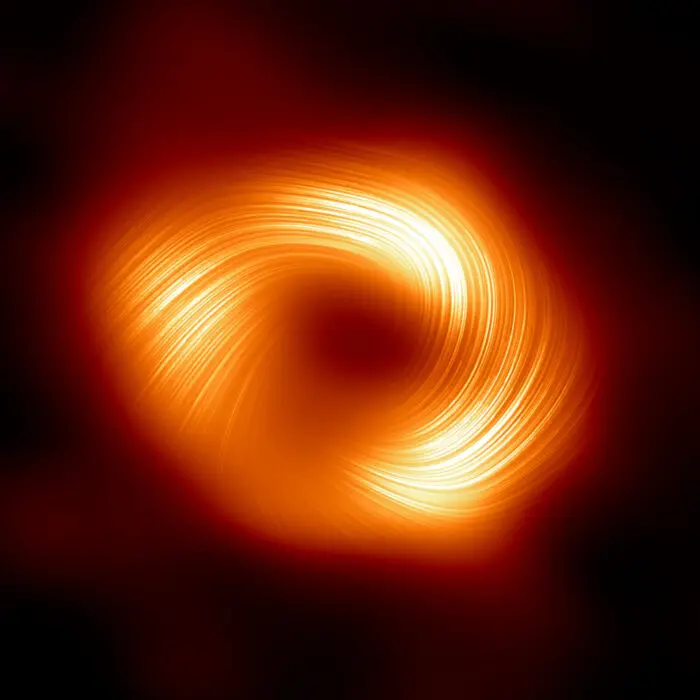
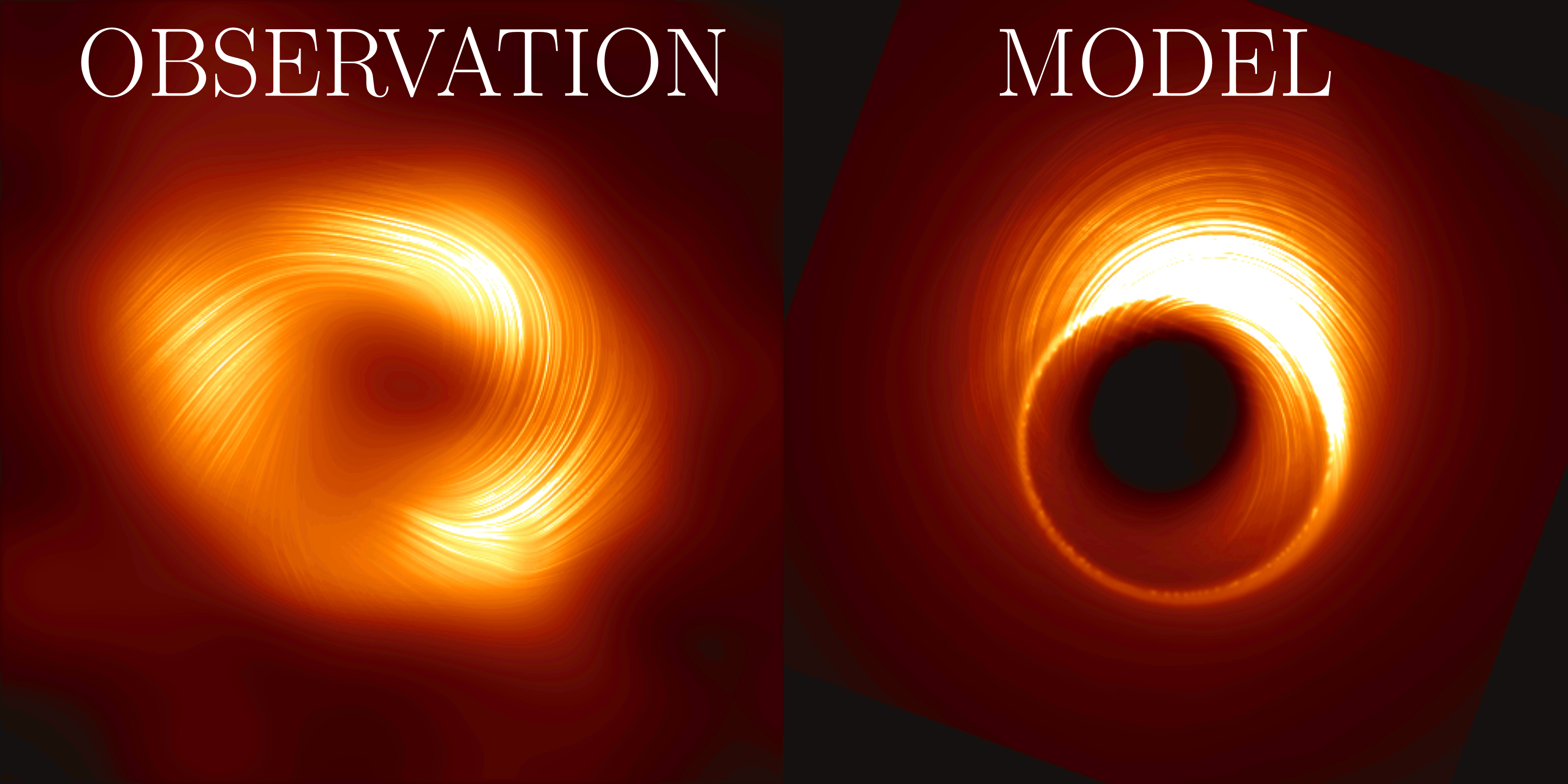
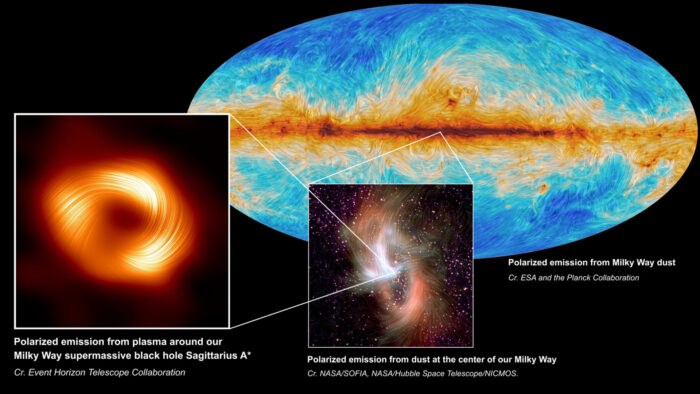
Contacts
-
Nicolás Lira
Education and Public Outreach Coordinator
Joint ALMA Observatory, Santiago - Chile
Phone: +56 2 2467 6519
Cel: +56 9 9445 7726
Email: [email protected]
-
Bárbara Ferreira
-
Jill Malusky
-
Naoko Inoue
EPO officer, ALMA Project
National Astronomical Observatory of Japan (NAOJ)
Email: [email protected]
